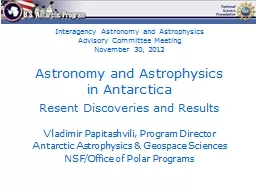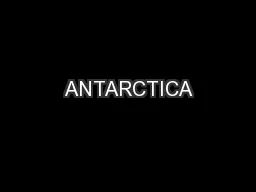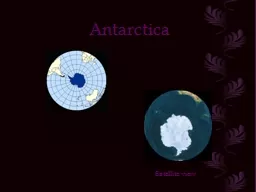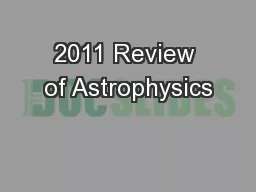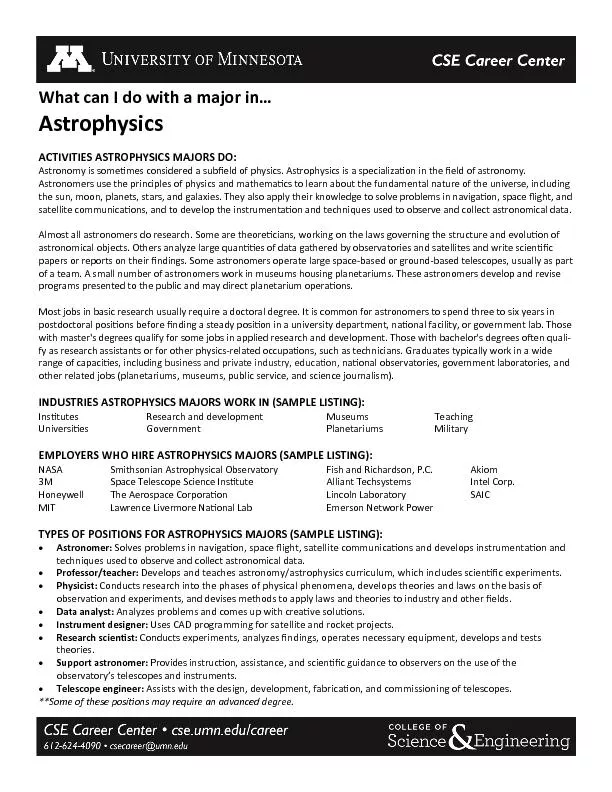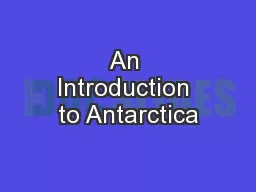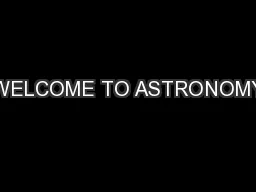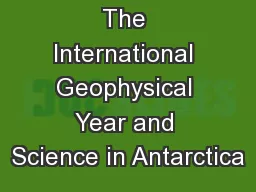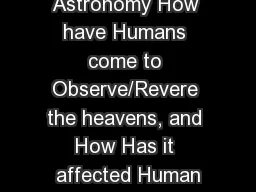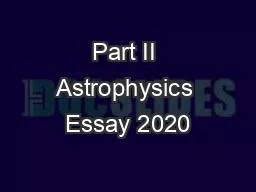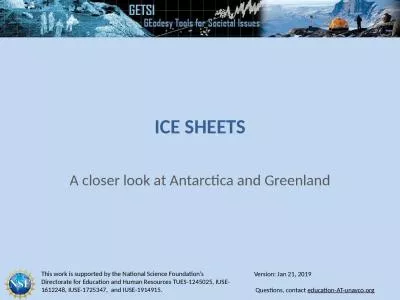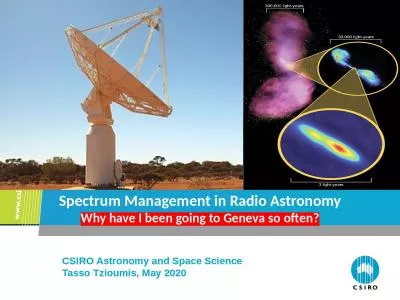PPT-Astronomy and Astrophysics in Antarctica
Author : mojartd | Published Date : 2020-06-25
Resent Discoveries and Results Vladimir Papitashvili Program Director Antarctic Astrophysics amp Geospace Sciences NSFOffice of Polar Programs Interagency Astronomy
Presentation Embed Code
Download Presentation
Download Presentation The PPT/PDF document "Astronomy and Astrophysics in Antarctica" is the property of its rightful owner. Permission is granted to download and print the materials on this website for personal, non-commercial use only, and to display it on your personal computer provided you do not modify the materials and that you retain all copyright notices contained in the materials. By downloading content from our website, you accept the terms of this agreement.
Astronomy and Astrophysics in Antarctica: Transcript
Download Rules Of Document
"Astronomy and Astrophysics in Antarctica"The content belongs to its owner. You may download and print it for personal use, without modification, and keep all copyright notices. By downloading, you agree to these terms.
Related Documents

